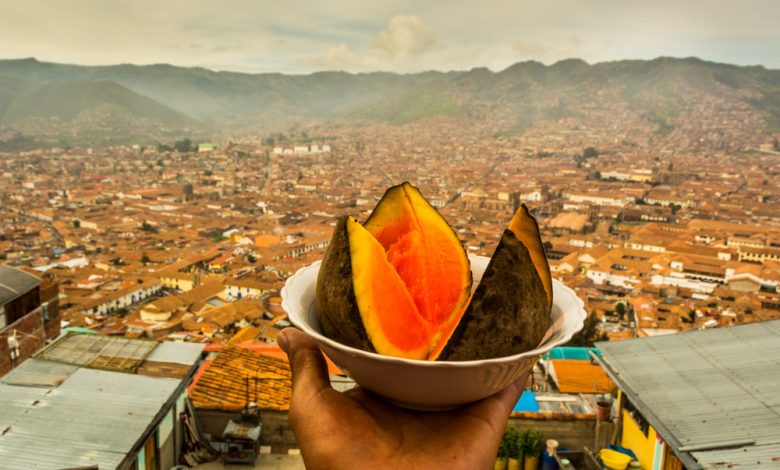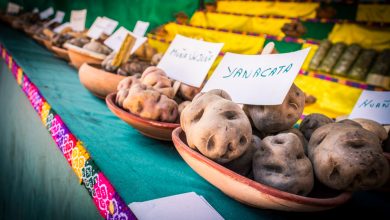Sweet and Enticing Zapote Excites Cusco

Zapote Fruit Enchants Cusco These Days (Hebert Huamani Jara)
A round fruit, the external part of zapote is Brown. It is soft and fresh like damp earth and is easily available to Cusco’s public. Its pulp is orange like a mandarin and it has five hairy seeds like a mango’s that are hidden in the orange pulp. Its flavor is sweet, soft, and agreeable.
It grows in the Peruvian jungle, especially in Puerto Maldonado, Pucallpa, and Iquitos. My first experience and contact with this fruit that I remember was in Iquitos. You can buy it there in the city’s popular markets and it is quite economical. A kilo costs only 2.50/S. Iquitos’ people consume it as juice, in jams, and as a soft drink. On some of the streets you will see caseras, vendors, with big buckets filled with the Zapote drink. They sell it to passersby for 1/S per glass. The color of this refreshing and sweet drink is as orange as the fruit’s pulp.
In the jungle this fruit is very popular and much consumed by the population.

Nevertheless, in Cusco it is not as well known or as popular since it does not grow in our region. In our popular markets only a few vendors know it and offer it for sale. You just do not see it much in our markets, although it does appear on our streets.

Its season begins in December and lasts until mid March. At the season’s beginning the price is about 4/S per kilo and in a kilo you get two or three zapotes. Towards March it goes up to 5/S a kilo. During these months the consumption of Zapote goes up considerably.
You will find zapote around the popular markets of San Pedro and Ccasccaparo. The sellers push carts filled with them. Often they are wheelbarrows covered with colorful cloths on which the zapotes are nested to draw the attention of the crowds.
Attracted by the lively color of the fruit I went up to a vendor to buy one. She wore a brown hat and a blue apron. She was on the corner of Tupac Amaru Street waiting for clients. I asked her how much the fruit was per kilo and she told me five soles. This nice lady gave me a piece to taste and its flavor was sweet and soft just like the first time I had tried it in Iquitos.
I asked her where the fruit came from and she told me it was from Puerto Maldonado. Playing with the seed in my mouth I told her it tasted delicious. She said “at dawn on Tuesdays, Fridays, and Sundays the fruit arrives at the wholesale market of Huancaro along with aguajes, bananas, watermelon, and more. We merchants get our fruit from there.”
When I was about to leave, an older man came up wearing a cap. Glasses, blue shirt, and with a black

beard. The casera offered him a taste saying: “It is sweet casero.” The client asked her what eating the fruit was good for. She told him. “It is good for digestive problems, for stomach acidity, and to humidify your skin”. The client smiled and seemed satisfied from the casera’s answer. He took away two kilos of the fruit content as if a child.
There are only few ambulatory vendors in the streets with their scales ready for their clients who enjoy the flavor of this fruit.
Zapote is not well known in the region of Cusco. It is only now beginning to call people’s attention. I am sure that as its consumption grows more and more people will like it and want it. It is a nutritious and tasty fruit that you will like.





